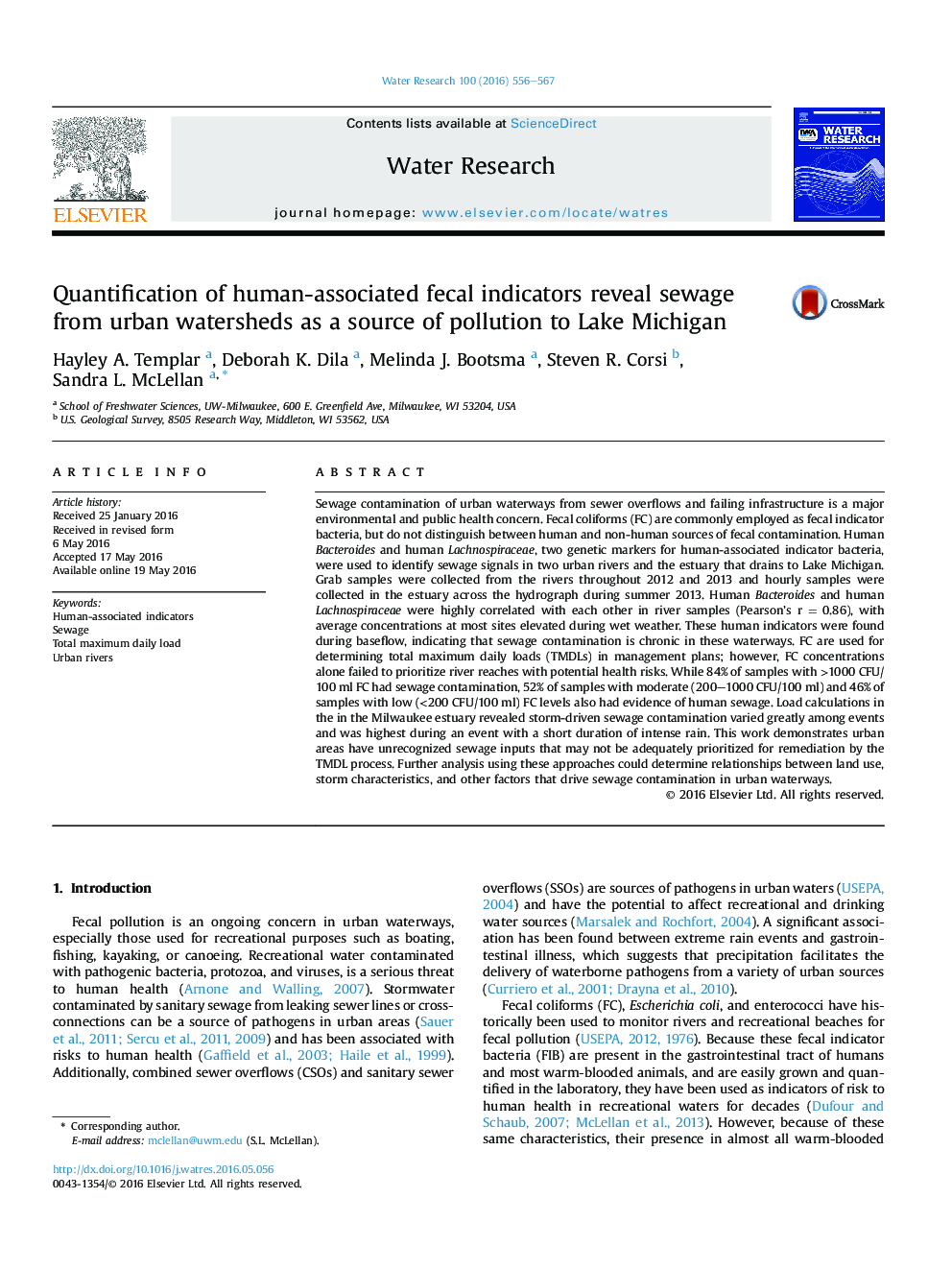| کد مقاله | کد نشریه | سال انتشار | مقاله انگلیسی | نسخه تمام متن |
|---|---|---|---|---|
| 6364409 | 1623068 | 2016 | 12 صفحه PDF | دانلود رایگان |
عنوان انگلیسی مقاله ISI
Quantification of human-associated fecal indicators reveal sewage from urban watersheds as a source of pollution to Lake Michigan
ترجمه فارسی عنوان
کوانتومی شاخص های مدفوع مرتبط با انسداد فاضلاب از حوضه های شهری به عنوان منبع آلودگی به دریاچه میشیگان
دانلود مقاله + سفارش ترجمه
دانلود مقاله ISI انگلیسی
رایگان برای ایرانیان
کلمات کلیدی
شاخص های مرتبط با انسانی، فاضلاب شهری، حداکثر حداکثر بار روزانه، رودخانه های شهری،
موضوعات مرتبط
مهندسی و علوم پایه
علوم زمین و سیارات
فرآیندهای سطح زمین
چکیده انگلیسی
Sewage contamination of urban waterways from sewer overflows and failing infrastructure is a major environmental and public health concern. Fecal coliforms (FC) are commonly employed as fecal indicator bacteria, but do not distinguish between human and non-human sources of fecal contamination. Human Bacteroides and human Lachnospiraceae, two genetic markers for human-associated indicator bacteria, were used to identify sewage signals in two urban rivers and the estuary that drains to Lake Michigan. Grab samples were collected from the rivers throughout 2012 and 2013 and hourly samples were collected in the estuary across the hydrograph during summer 2013. Human Bacteroides and human Lachnospiraceae were highly correlated with each other in river samples (Pearson's r = 0.86), with average concentrations at most sites elevated during wet weather. These human indicators were found during baseflow, indicating that sewage contamination is chronic in these waterways. FC are used for determining total maximum daily loads (TMDLs) in management plans; however, FC concentrations alone failed to prioritize river reaches with potential health risks. While 84% of samples with >1000 CFU/100 ml FC had sewage contamination, 52% of samples with moderate (200-1000 CFU/100 ml) and 46% of samples with low (<200 CFU/100 ml) FC levels also had evidence of human sewage. Load calculations in the in the Milwaukee estuary revealed storm-driven sewage contamination varied greatly among events and was highest during an event with a short duration of intense rain. This work demonstrates urban areas have unrecognized sewage inputs that may not be adequately prioritized for remediation by the TMDL process. Further analysis using these approaches could determine relationships between land use, storm characteristics, and other factors that drive sewage contamination in urban waterways.
ناشر
Database: Elsevier - ScienceDirect (ساینس دایرکت)
Journal: Water Research - Volume 100, 1 September 2016, Pages 556-567
Journal: Water Research - Volume 100, 1 September 2016, Pages 556-567
نویسندگان
Hayley A. Templar, Deborah K. Dila, Melinda J. Bootsma, Steven R. Corsi, Sandra L. McLellan,
